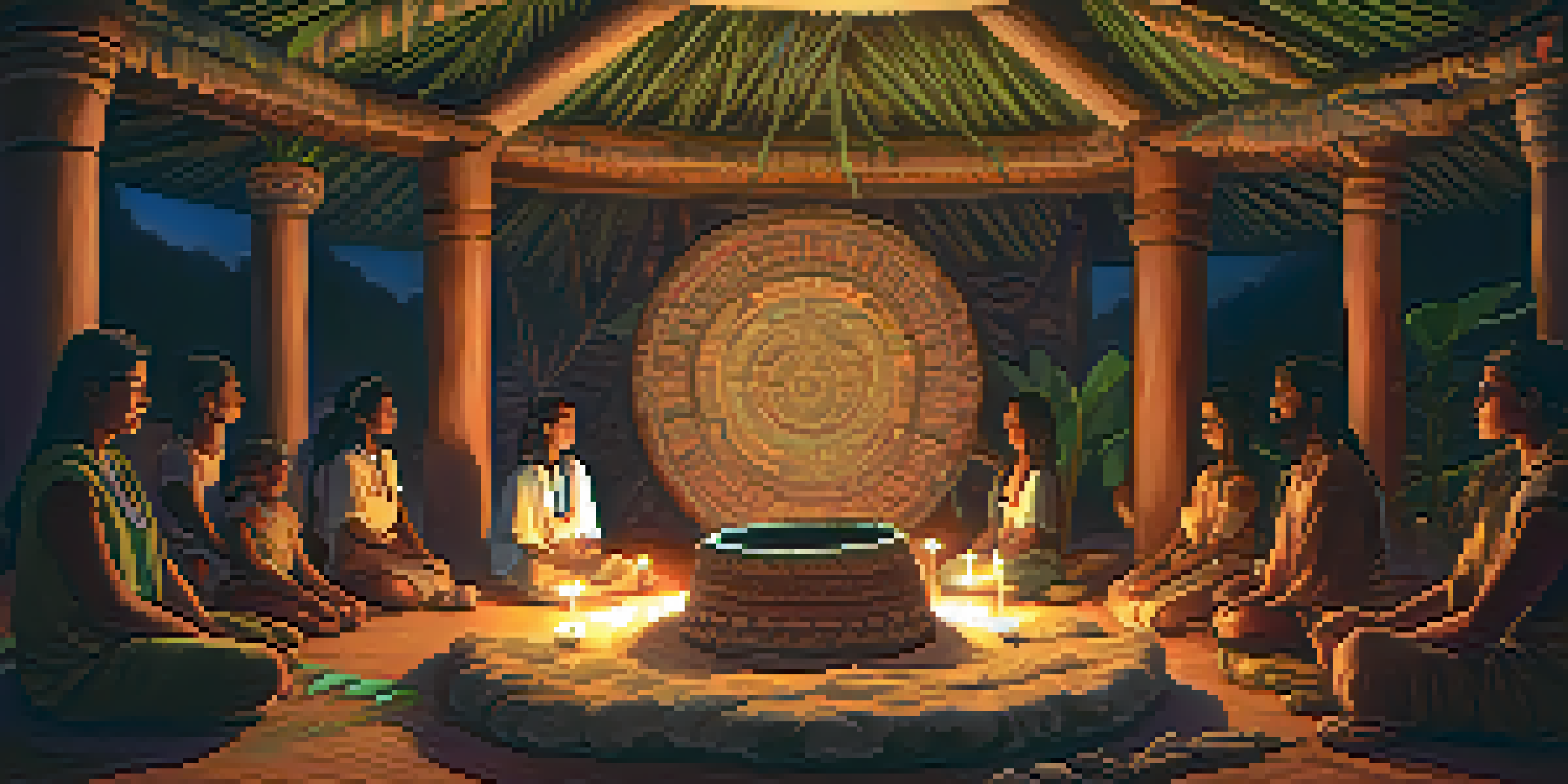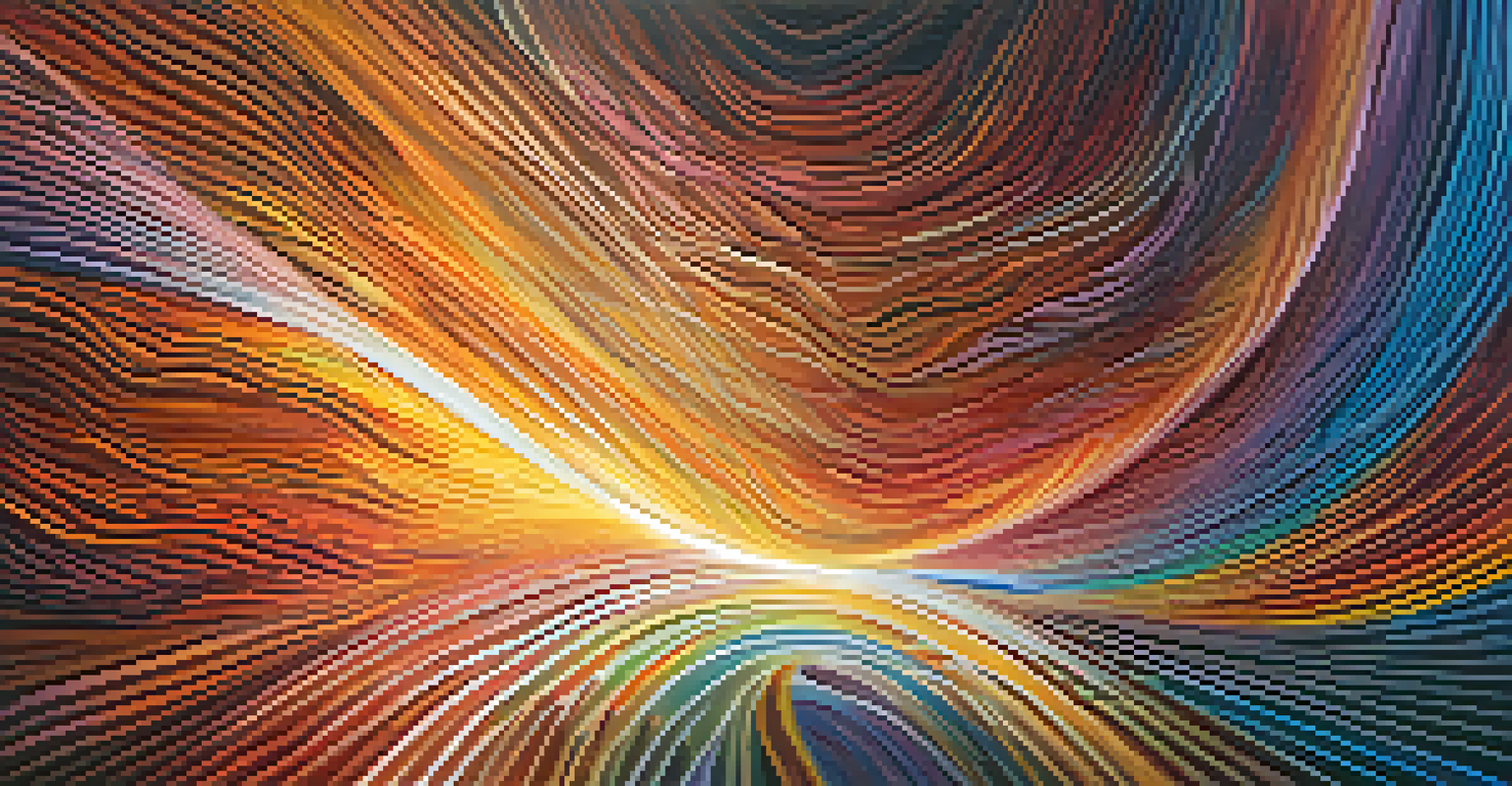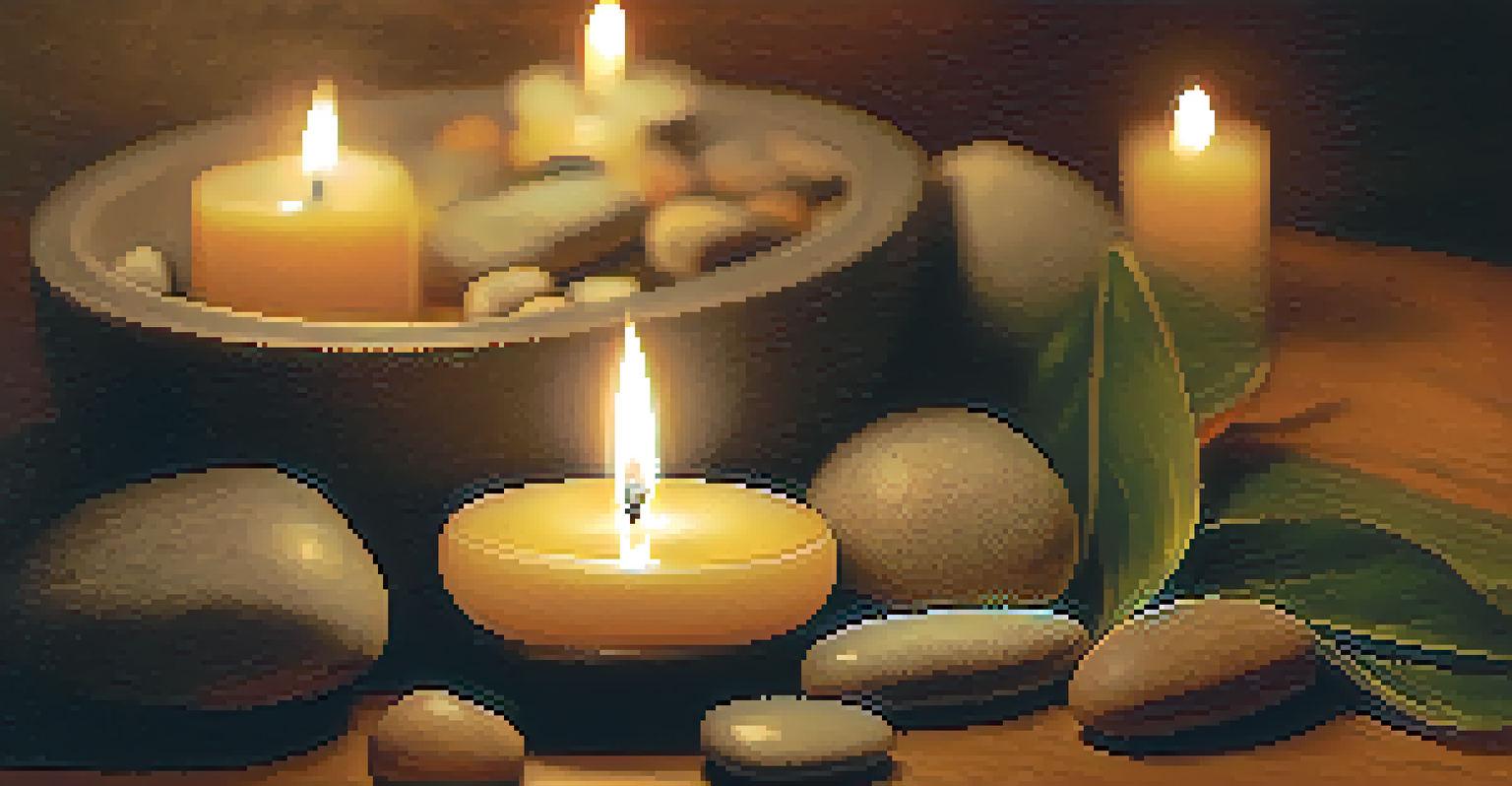Environmental Factors: Sound and Light in Ayahuasca Use

Understanding Ayahuasca and Its Ritual Context
Ayahuasca is a powerful brew made from the Banisteriopsis caapi vine and other plants, traditionally used in South American shamanic practices. Its psychoactive properties are well-known for inducing deep spiritual and introspective experiences. In these rituals, various environmental factors, such as sound and light, play a crucial role in shaping the experience.
Sound is the shorthand of experience.
The use of ayahuasca often takes place in a ceremonial setting, where the shaman guides participants through the journey. This guidance is not just verbal; it involves a careful orchestration of sounds and visuals to enhance the experience. Understanding how these elements work together helps us appreciate the transformative nature of ayahuasca.
As participants drink ayahuasca, they enter altered states of consciousness, which can be influenced by the surrounding environment. Soundscapes, often created by instruments or chanting, and lighting, whether natural or artificial, can significantly impact the emotional and psychological journey that unfolds.
The Role of Sound in Ayahuasca Ceremonies
Sound is one of the most powerful tools used during ayahuasca ceremonies. It can evoke emotions, create a sense of safety, and guide participants through their inner landscapes. Shamans often use traditional instruments like drums, rattles, and flutes, which resonate at frequencies that can enhance the experience.

The rhythmic patterns of these sounds can help participants enter deeper meditative states, making it easier to connect with their subconscious. For many, the music acts as a bridge to the spiritual realm, facilitating communication with higher consciousness or nature. This auditory experience is as integral to the journey as the ayahuasca itself.
Sound Shapes Ayahuasca Journeys
The use of sound, including traditional instruments and icaros, significantly enhances the emotional and spiritual experiences during ayahuasca ceremonies.
Additionally, the choice of songs or chants—known as icaros—can vary based on the intentions of the ceremony. These icaros carry specific meanings and vibrations, allowing participants to navigate through their visions and emotional landscapes more effectively.
The Influence of Light on the Ayahuasca Experience
Just as sound plays a vital role, light also significantly affects the ayahuasca experience. The lighting in a ceremonial space can create a mood that enhances or detracts from the journey. Soft, dim lighting may promote introspection, while brighter lights could encourage a more energetic experience.
Light is the symbol of truth.
Some ceremonies incorporate candles or natural light, which can evoke feelings of warmth and safety. These subtle shifts in lighting can help participants feel more grounded, allowing them to explore their inner worlds without distraction. The interplay of light can also influence how visions manifest during the experience.
Moreover, certain colors of light can elicit specific emotional responses, further shaping the experience. For instance, warm hues may foster feelings of love and comfort, while cooler tones could evoke introspection or clarity. Understanding this can help participants prepare mentally for their journeys.
Environmental Harmony: Sound and Light Interactions
The interaction between sound and light creates a unique environment that can amplify the effects of ayahuasca. When these elements align harmoniously, they can create a multisensory experience that envelops participants, enhancing their emotional and spiritual journeys. This synergy is essential for fostering a space where profound healing and insight can occur.
For instance, during moments of intense emotional release, the sound may swell while the light dims, creating an atmosphere that encourages vulnerability. This dynamic interplay allows participants to navigate their feelings more freely, fostering a deeper connection to their inner selves.
Light Influences Emotional States
The lighting in ceremonial spaces can set the mood, affecting how participants process their experiences and explore their inner worlds.
By understanding how sound and light complement each other, participants can better prepare for their ayahuasca experiences. This awareness enables them to embrace the journey fully, knowing that their environment is designed to support their healing and growth.
Personal Experiences: Sound and Light in Action
Many individuals who have participated in ayahuasca ceremonies report profound experiences influenced by sound and light. For example, one participant shared how the sound of the drum resonated deeply within them, bringing forth emotions they had long buried. This connection to sound helped them confront and release their past traumas.
Similarly, another participant recounted how the flickering candlelight during their ceremony created a safe cocoon, allowing them to dive deep into their consciousness. The interplay of shadows and light felt like a dance that mirrored their inner journey, guiding them through moments of fear and revelation.
These personal stories illustrate the significant role that sound and light play in shaping individual experiences. Each journey is unique, but the common thread remains: the environment can profoundly influence how participants perceive and process their experiences.
Preparing for Your Ayahuasca Experience: Considerations
If you're considering participating in an ayahuasca ceremony, it's essential to prepare mentally and emotionally. Understanding the role of sound and light can help you set realistic expectations for your experience. Familiarize yourself with the types of sounds and lighting that might be present, as they can significantly shape your journey.
Consider discussing your preferences with the shaman or facilitator beforehand. They may be able to accommodate your needs or provide insights into how sound and light will be used during the ceremony. This could help you feel more comfortable and open during your experience.
Synergy of Sound and Light
The harmonious interaction between sound and light amplifies the overall ayahuasca experience, facilitating deeper healing and insight.
Additionally, take time to reflect on your intentions for the journey. Knowing what you hope to explore can guide how you respond to the sounds and lights around you, allowing you to engage more fully with the process.
Conclusion: Embracing the Synergy of Sound and Light
In conclusion, the roles of sound and light in ayahuasca ceremonies are not just supplementary; they are integral to the overall experience. Understanding how these elements interact can help participants navigate their journeys with greater awareness and intention. By embracing the significance of sound and light, one can enhance their connection to the ayahuasca experience.
As you prepare for your own journey, remember that the environment is designed to support your exploration of self and spirit. The sounds you hear and the light you see are not random; they are part of a carefully crafted experience meant to facilitate healing and insight.

Ultimately, the synergy of sound and light in ayahuasca use invites participants to immerse themselves fully in their journeys. By appreciating these elements, you can open yourself to the profound possibilities that await.